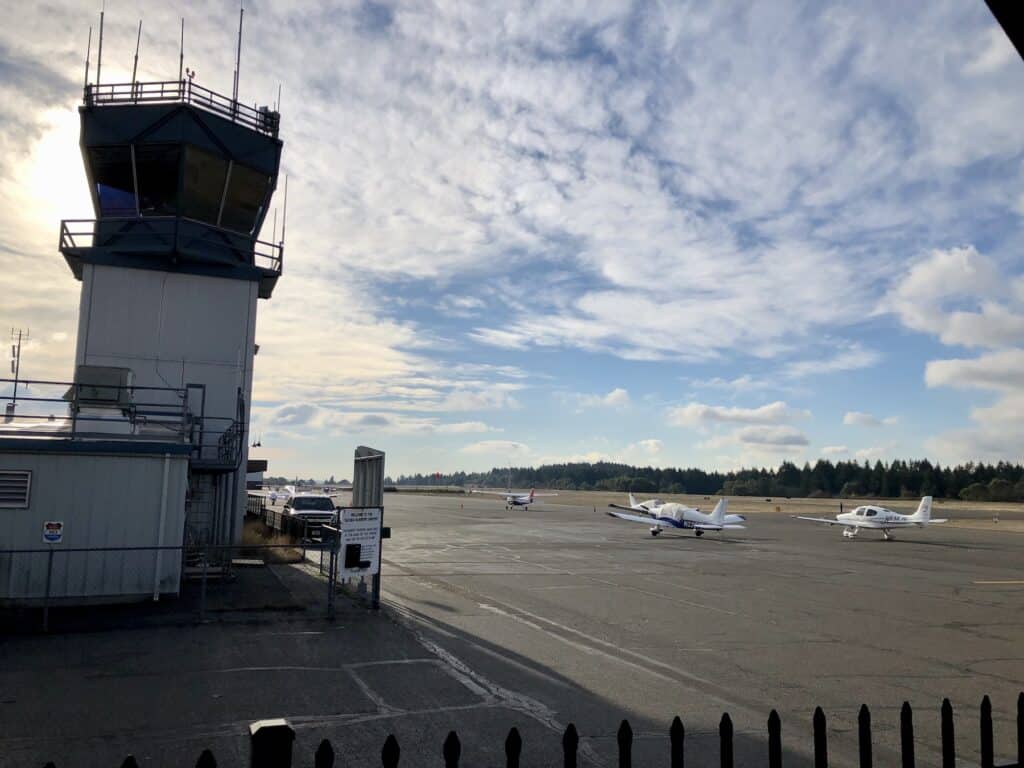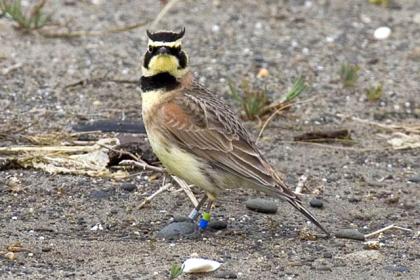Community Environment Government
Tacoma Narrows Airport to cut down trees, as required by FAA
Planning is complete. Tacoma Narrows Airport now is moving ahead with design and construction of projects to improve safety and comply with Federal Aviation Administration standards.
They are:
- Removing trees to improve safety;
- Shifting the main taxiway 50 feet to the east so it’s an FAA-required 400 feet from the runway, and moving a stormwater pond that’s in the way;
- Rerouting another taxiway to divert direct access to the runway, per FAA regulations; and
- Adding more security fencing to keep wildlife out of operating areas.
A 2019 tree survey determined that 51.7 acres at the Pierce County-owned airport need to be cleared and 2,055 trees selectively logged because of their height — 150 feet higher than the runway — and location. Most are north and west of the landing strip.
Removing trees is the biggest concern
Removing them concerned many of the 26 people who remarked on a draft environmental assessment during a February-March public comment period. They worried about killing wildlife, destroying habitat, air quality decline, and loss of rural character, shade and beauty.
The county acknowledges that nobody likes to lose trees, but says the work is necessary.
The airport received FAA Airport Improvement Program (AIP) grants to complete a master plan update in 2016. That update and an airport landside planning study in 2019 identified the projects.
The funding obligated the county to comply with all FAA regulations, said Airport Manager Rob Propst. Otherwise, the FAA could withhold future grants.
“Any time you take federal money, there’s always a hook,” Propst said. “The hook with AIP money is compliance with the contract. That’s why we’re doing this. It isn’t Pierce County saying we want to cut down 50 acres of trees.”
Selective logging when possible
Crews will log selectively when possible to retain surrounding vegetation. They’ll clear and grub where trees grow so densely that it’s not practical to harvest them individually.
Afterward, they will remove logging roads, smooth disturbed ground and plant with grass, at least.
Crews will conduct the work over a few years for three to four months each year to remain outside of the nesting period for migratory birds.
The trees are part of a second-growth forest that provides wildlife habitat, according to the environmental assessment. But there is no old growth of the type where endangered species live. The work likely will kill some birds and mammals; others will relocate to nearby woods.
One commenter suggested topping the trees instead of cutting them down. The environmental assessment responded that would be a temporary solution because they would grow back and make the airport ineligible for additional FAA funding.
One bird won’t be found in the forest but drew major attention during project planning.
When the airport opened in 1963, it created attractive habitat for streaked horned larks. The larks, federally listed as threatened and state listed as endangered, reside and nest in the grassy, mowed areas around the runway and taxiways. Several steps will be taken to protect them during the realignments.
“We’re very cognizant of that endangered species,” Propst said. “Whatever we do will be done in conjunction with Fish and Wildlife’s approval outside of their critical nesting times. Airports have dealt with this for years. It’s something that will shorten the construction time, but it’s just part of dealing with creating habitat for a species that needs a place to live.”
Noise was an issue in public comments
Gig Harbor Now tried to reach commenters for fresher statements than those published early in the year. Few responded. Seth Johnson, echoing the concern of many commenters in the environmental assessment, said: “My main issue with the airport is their refusal, in conjunction with the FAA, to address noise. As a commercial pilot I know many of these issues could easily be addressed.”
The county said the FAA didn’t require a noise study on the projects. The agency requires such a study only when projects involve more than 90,000 annual aircraft operations, or a new airport location, new runway, major runway extension or runway strengthening.
Most of the trees to be removed are north of Stone Drive, where airport noise is predominately from aircraft in flight far above the trees, it said.
“Today that’s all done by computer modeling,” Propst said of noise studies. “With 2,000 trees removed, the noise modeling shouldn’t change.”
No plan to extend runway, expand airport
Another repeated concern among commenters was about future runway extension and/or airport expansion. The assessment explained that these projects involve neither. Those would require a separate environmental review. Pilots use Tacoma Narrows Airport primarily for business jet travel and general aviation.
“Councilman (Derek) Young and County Executive (Bruce) Dammeier signed letters saying we don’t want to be an air carrier airport,” Propst said. “The master plan specifically says that. The Gig Harbor Peninsula Community Plan actually has a statement in there that says the county will not lengthen the runway. This action has nothing to do with increasing capacity. It’s got everything to do with safety.”
The community plan states: “The community does not support and Pierce County is not planning to extend the runway. The community supports continued growth and development at Tacoma Narrows Airport when consistent with the current runway length and location and with the Pierce County Comprehensive Plan, Gig Harbor Peninsula Community Plan and Federal Aviation Administration standards.”
An airport’s design is based on characteristics of its critical aircraft — the most demanding aircraft that regularly uses it. At Tacoma Narrows, it’s the Cessna Citation family of business jets. Officials derive an airport reference code (ARC) from that class of aircraft’s approach speed and wingspan.
FAA uses that as the main criteria for determining design standards and dimensions such as runway and taxiway width. Tacoma Narrows’ ARC is C-11, which hasn’t changed.
The county can now apply for FAA funding for design and construction, Propst said. Design is expected to be finished in May 2023, with construction to follow from 2023 to 2026. Tree removal is estimated at $4.6 million, with the FAA funding 90% of project costs.
“It is a process,” Propst said. “Since 2015-16 we’ve been in a planning mode and we’re about to cross the line to do actual projects.”



